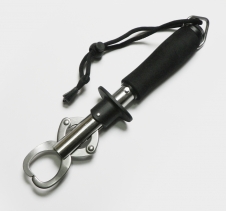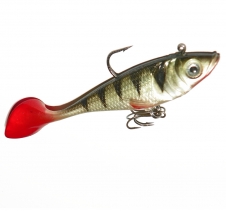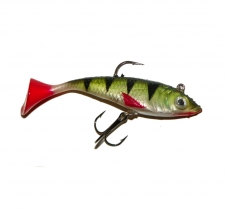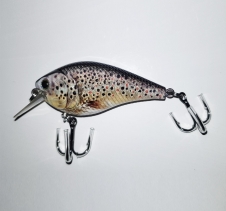Visit Our Online Store! $7 AusPost Parcel Post Delivery FREE Postage for orders $45 and over!
* Shipping rates above apply to Australian Customers only
How to fish for Australian Whiting.
The basics for successfully targeting Australian Whiting.
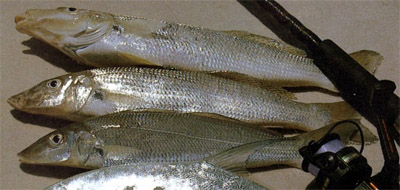
Sand Whiting | Photo by Kare Kare
Bait For Whiting
Sandworms and bass yabbies are both excellent baits for whiting. They should be kept near the bottom of the water column, in range of feeding whiting, by using a sinker and short leader to the bait. Whiting will attack both sandworms and bass yabbies that are within around 30cm or less from the substrate, but will rarely run after bait that is in open water. The benefit of a short leader means that while the whiting may initially pass on the bait, the fact it remains in the area without fleeing quickly makes it an easy target for a second think at an attack.
Frozen sandworms can be used as bait too, but are less superior than live sandworms when targeting whiting. For those squeamish about live bait this is likely your best option, other good options for dead bait are pipi flesh and small raw prawns.
If live bait is not an issue, a bait pump along the wet tide lines of the water will often produce a few bass yabbies. Low tide is usually best for bait pumping. With bass yabbies, smaller yabbies are often found closest to the low tide water line, whereas the larger yabbies will be further up in the area that has been without water for a few hours but is still damp. Bait pumps are inexpensive and make life a lot easier to search for bass yabbies.
Sandworms involve a different process, as they are extremely long and have a tremendous grip in the wet sand. Seeking sandworms out manually is usually the best way. This can be done by throwing some dead bait or a spent catch (fish carcass already gutted and with fillets removed) in a bait net and then walking into the tide edge. Brushing the bottom of the net along a small section of sand as waves are passing through will entice the worms to pop their heads out in search of the food they have detected. Once you locate the head of a sandworm, you can approach it with a piece of pipi or peeled prawn in one hand and a pair of pliers in the other.
Feed the head of the worm some pipi or raw prawn to keep it interested and then slowly press the opened pliers into the sand to clamp the worm about 2.5cm from the top. Once you have a grip on it, you will need to pull it slowly out and upwards while maintaining a constant pressure. With this method you can usually draw a worm out fairly easily, and they will be fairly simple to locate.
Seasons & habitats
Whiting are caught occasionally during the cooler seasons, their location during this time is usually fair way downstream in estuaries. Once the weather begins to heat up they get on the move again, and can be found all the way through estuaries, along with inshore around bays and inlets.
The behaviour of whiting varies considerably between different environments. In urban areas and places with a lot of water traffic, adult whiting choose to hunt when the water is clear of human activity. Depending on the popularity of the spot you are fishing, this could be anywhere from early morning to late in the night.
In remotely accessed areas or places with deeper waters, whiting usually exhibit feeding activity from early morning to dusk, with the best time for general fishing around sunrise and sunset.
Smaller whiting do not seem to show a preference to avoiding human activity as much as their elders, and can be caught in many differing conditions without much of a pattern to follow.
Whiting in waters with accessible sandbanks will often aim to target these regions upon rising tide. While the water rushes in over the previously drying sand, bass yabbies and sandworms become active and seek to move upward towards the water, sometimes even exiting the sand into the water to seek food. This provides whiting with an easy and consistent feeding routine.
Fishing near the sandy banks of rivers or along beaches while the tide is coming in will regularly provide the most productive whiting catches for your outing.
Whiting on lures
Whiting will also take lures provided the lure resembles something to do with their regular diet. Small white, luminous or semi transparent soft plastic shrimps are known to work well, as are small pearl coloured grubs and worms. Lures should be bounced slowly along the river bed before being brought back up into the water column again. Letting the soft plastic rise no more than around 2 feet from the substrate is often best practice to lure bottom feeding whiting into an attack.
Whiting are also known to spend time searching for shrimp higher up in the water column, in this environment they are often very willing to take a chance on a lure. For these circumstances a hard body lure can also be used, with the target area being near top water. This inspires the whiting to attack as the movement of avoiding shrimp is usually always upwards, the top of the water column indicates a limited escape chance compared to open water. The main colour patterns recommended are any with very high transparency, along with lures dominated by white or pink features, combinations of these regularly work very well.
Follow us on twitter: @FishTackleLures or Google Plus: +FishingTackleLuresAU
View more articles in our Australian Fishing Guide.
Enter your email address below to be updated on new fishing articles, fishing lures and special offers:
We will only email once every two to four weeks at the most, usually every 2 months.
POPULAR PRODUCTS IN OUR ONLINE STORE


